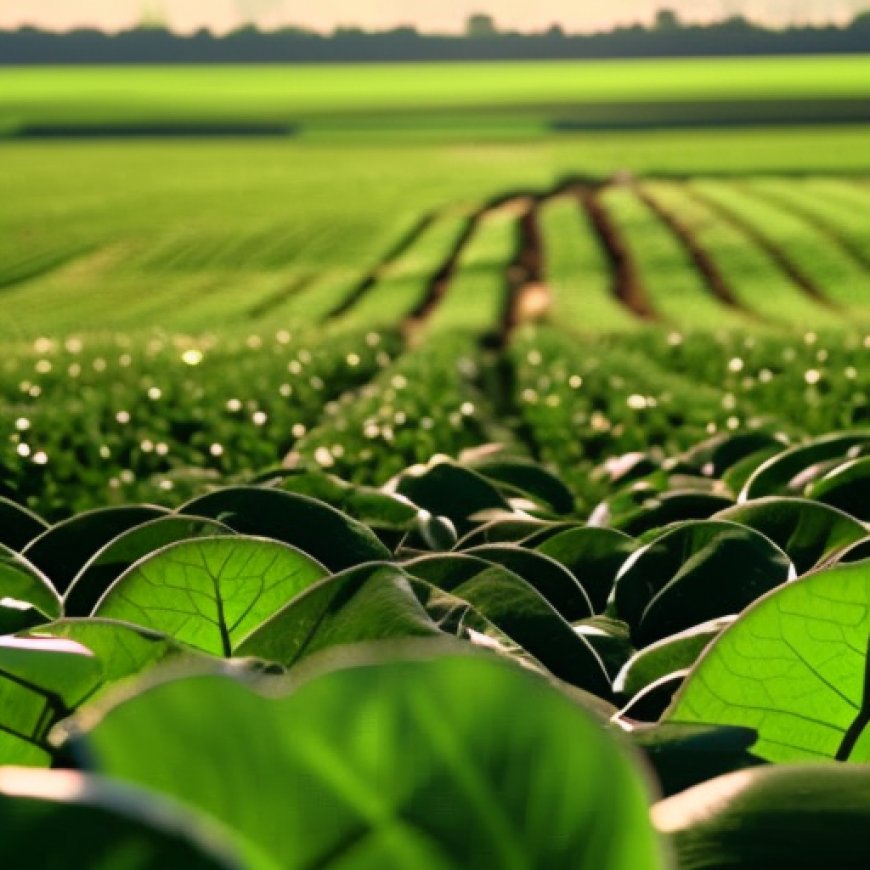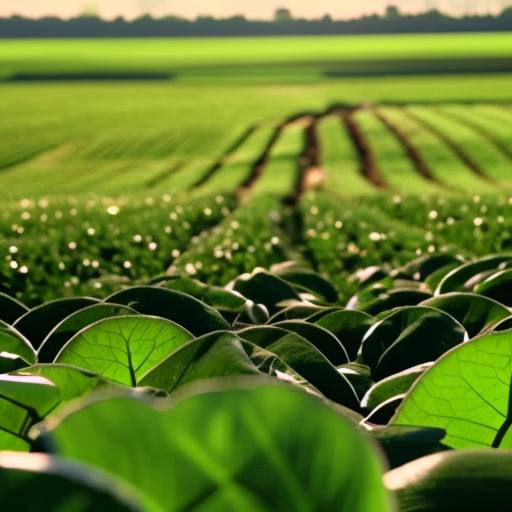2022 EPA emissions inventory highlights agriculture’s sustainability strides
2022 EPA emissions inventory highlights agriculture's sustainability strides | Extra Intel | farmweeknow.com FarmWeekNow.com


Inventory of U.S. Greenhouse Gas Emissions and Sinks: 1990-2022
On April 11, the Environmental Protection Agency published the latest edition of the Inventory of U.S. Greenhouse Gas Emissions and Sinks: 1990-2022. The report has been published annually since 1990 and provides an annual estimate of all man-made greenhouse gas emission sources in the U.S. as well as estimates of the amount of carbon trapped in forest and vegetation soil. This report is submitted to the United Nations as part of the United Nations Framework Convention on Climate Change reporting guidelines on annual inventories, which is part of a global standardized process for reporting greenhouse gas emissions.
Overview of 2022 Emissions
- Total U.S. emissions from all man-made sources in 2022 were 6.34 billion metric tons in CO2 equivalents, a 0.2% increase from 2021.
- Land use, land-use changes, and forestry (LULUCF) trapped 854 million metric tons of carbon in the soils, representing 13% of total U.S. emissions.
- Net emissions, which combine total U.S. greenhouse gas emissions with the sequestered greenhouse gas emissions, totaled 5.5 billion metric tons, up 1.3% from 2021.
Emissions by Economic Sector
- The transportation sector was the largest emissions source, representing 28% of total emissions.
- Electricity generation represented 25% of total emissions.
- The industrial sector represented 23% of all emissions.
- The commercial and residential sectors and U.S. territories represented 14% of all U.S. emissions.
Agricultural Emissions in 2022
- Emissions from agriculture totaled 634 million metric tons in CO2 equivalents, or 9.99% of all U.S. emissions, during 2022.
- Crop cultivation emissions totaled 319 million metric tons, down 1.7% from 2021.
- Livestock emissions were 274 million metric tons, down 2.1% from 2021.
- Fuel combustion utilized by the agricultural sector contributed 41 million metric tons in 2022.
Agricultural Productivity and Emission Trends
- U.S. agricultural emissions have increased by 6.4% since 1990, but productivity gains have allowed emissions to decline relative to population and productivity increases.
- Productivity in the agricultural sector has increased, with farmers and ranchers producing nearly three times more output per unit of input since 1948.
- Since 1990, dairy farmers have increased milk output by 53%, while emissions from enteric fermentation from dairy cattle per billion pounds of milk produced have dropped 26%.
- U.S. farmers have increased red meat production by 44% since 1990, while emissions from enteric fermentation from beef cattle have dropped 28% per billion pounds produced.
Summary and Policy Conclusions
- U.S. agriculture represents just under 10% of total U.S. emissions.
- Per capita and per unit agricultural emissions are declining, indicating increased productivity and efficiency in the sector.
- Voluntary, market-based incentives have helped farmers and ranchers reduce their environmental footprint and trap carbon in the soil.
- Investments in conservation and agricultural research are crucial for further improving efficiency and reducing emissions.
- Recognizing agriculture as a partner in reducing greenhouse gas emissions allows for the utilization of voluntary, market-based incentives that benefit both the environment and farmers’ economic sustainability.
SDGs, Targets, and Indicators
SDGs Addressed or Connected to the Issues Highlighted in the Article:
- SDG 2: Zero Hunger
- SDG 7: Affordable and Clean Energy
- SDG 9: Industry, Innovation, and Infrastructure
- SDG 12: Responsible Consumption and Production
- SDG 13: Climate Action
- SDG 15: Life on Land
Specific Targets Under Those SDGs Based on the Article’s Content:
- SDG 2.4: By 2030, ensure sustainable food production systems and implement resilient agricultural practices that increase productivity and production, that help maintain ecosystems, that strengthen capacity for adaptation to climate change, extreme weather, drought, flooding, and other disasters, and that progressively improve land and soil quality.
- SDG 7.2: By 2030, increase substantially the share of renewable energy in the global energy mix.
- SDG 9.4: By 2030, upgrade infrastructure and retrofit industries to make them sustainable, with increased resource-use efficiency and greater adoption of clean and environmentally sound technologies and industrial processes.
- SDG 12.4: By 2020, achieve the environmentally sound management of chemicals and all wastes throughout their life cycle, in accordance with agreed international frameworks, and significantly reduce their release to air, water, and soil to minimize their adverse impacts on human health and the environment.
- SDG 13.2: Integrate climate change measures into national policies, strategies, and planning.
- SDG 15.2: By 2020, promote the implementation of sustainable management of all types of forests, halt deforestation, restore degraded forests, and substantially increase afforestation and reforestation globally.
Indicators Mentioned or Implied in the Article:
- Total U.S. emissions from all man-made sources in CO2 equivalents
- Amount of carbon trapped in forest and vegetation soil
- Agricultural emissions as a percentage of total U.S. emissions
- Change in agricultural emissions from year to year
- Emissions from different economic sectors (transportation, electricity generation, industrial sector, commercial and residential sectors)
- Emissions from specific agricultural activities (crop cultivation, livestock, fuel combustion)
- Emissions from specific livestock categories (beef cattle, dairy cattle, swine, sheep, horses)
- Emissions from different agricultural sources (agricultural soil management, enteric fermentation, manure management, rice cultivation, urea fertilization, liming, field burning)
- Change in U.S. agricultural emissions from 1990 to present
- Productivity gains in U.S. agriculture
- Population growth in the U.S.
- Per capita agricultural emissions
Table: SDGs, Targets, and Indicators
| SDGs | Targets | Indicators |
|---|---|---|
| SDG 2: Zero Hunger | 2.4: By 2030, ensure sustainable food production systems and implement resilient agricultural practices that increase productivity and production, that help maintain ecosystems, that strengthen capacity for adaptation to climate change, extreme weather, drought, flooding, and other disasters, and that progressively improve land and soil quality. | – Amount of carbon trapped in forest and vegetation soil – Change in agricultural emissions from year to year |
| SDG 7: Affordable and Clean Energy | 7.2: By 2030, increase substantially the share of renewable energy in the global energy mix. | – Total U.S. emissions from all man-made sources in CO2 equivalents – Emissions from different economic sectors (transportation, electricity generation, industrial sector, commercial and residential sectors) |
| SDG 9: Industry, Innovation, and Infrastructure | 9.4: By 2030, upgrade infrastructure and retrofit industries to make them sustainable, with increased resource-use efficiency and greater adoption of clean and environmentally sound technologies and industrial processes. | – Emissions from different economic sectors (industrial sector) |
| SDG 12: Responsible Consumption and Production | 12.4: By 2020, achieve the environmentally sound management of chemicals and all wastes throughout their life cycle, in accordance with agreed international frameworks, and significantly reduce their release to air, water, and soil to minimize their adverse impacts on human health and the environment. | – Emissions from different economic sectors (commercial and residential sectors) |
| SDG 13: Climate Action | 13.2: Integrate climate change measures into national policies, strategies, and planning. | – Total U.S. emissions from all man-made sources in CO2 equivalents – Change in U.S. agricultural emissions from 1990 to present |
| SDG 15: Life on Land | 15.2: By 2020, promote the implementation of sustainable management of all types of forests, halt deforestation, restore degraded forests, and substantially increase afforestation and reforestation globally. | – Amount of carbon trapped in forest and vegetation soil |
Behold! This splendid article springs forth from the wellspring of knowledge, shaped by a wondrous proprietary AI technology that delved into a vast ocean of data, illuminating the path towards the Sustainable Development Goals. Remember that all rights are reserved by SDG Investors LLC, empowering us to champion progress together.
Source: farmweeknow.com

Join us, as fellow seekers of change, on a transformative journey at https://sdgtalks.ai/welcome, where you can become a member and actively contribute to shaping a brighter future.







